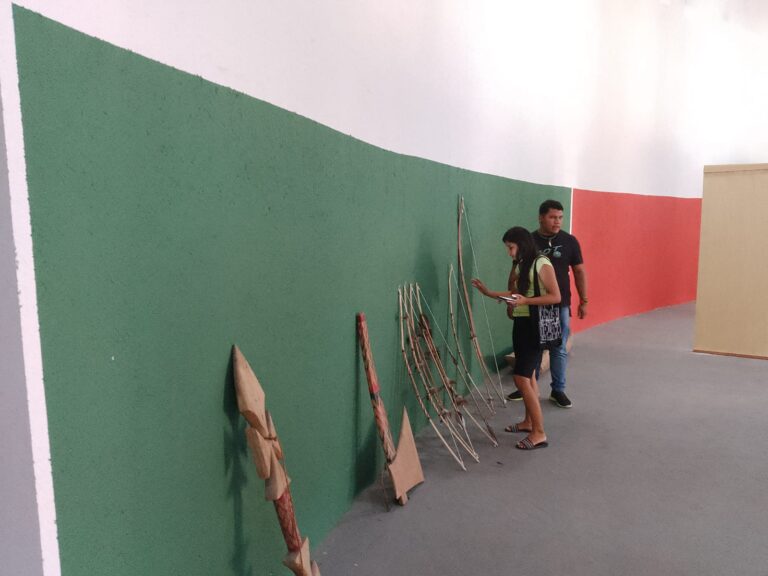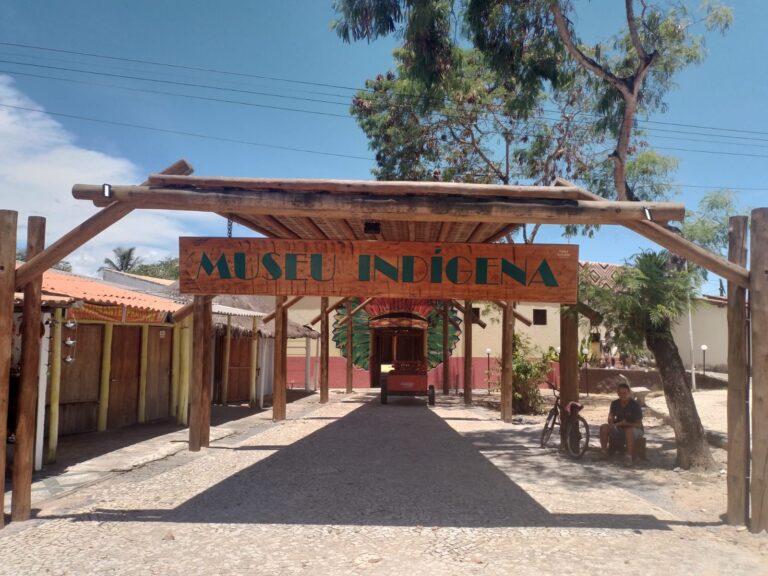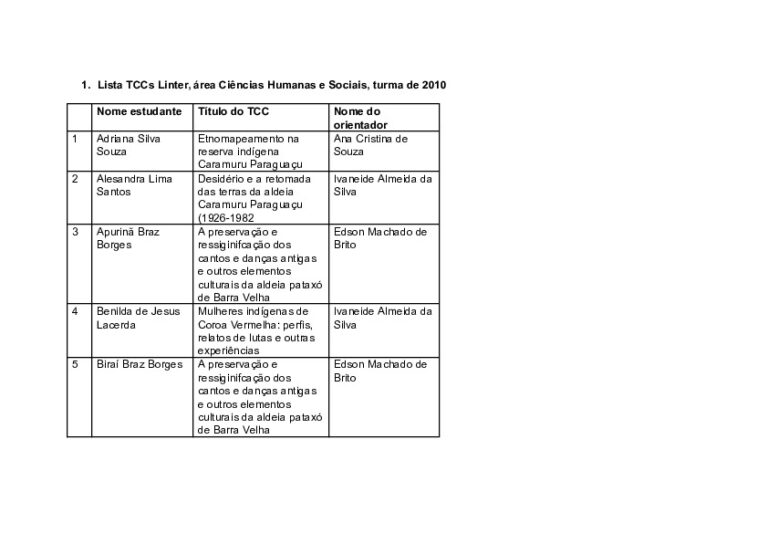Documento
Coleções e subcoleções temáticas
História indígena e do indigenismo no Sul e Extremo Sul da Bahia > Territórios da retomada Pataxó
Gênero do documento
Textual
Espécie e tipo de documento textual
Documento não publicado (manuscrito - minutas - etc)
Autoria
Título
Territories of the Pataxó retaking: reconstructing the Pataxó Indigenous Museum of Coroa Vermelha (Bahia, Brazil)
Local de produção
Data
2023
Período ou ano do documento
Século 21 > Década 2020 > 2023
Instituição produtora e/ou órgão responsável
Universidade Federal do Sul da Bahia > Centro de Documentação e pesquisa Memórias do Sul da Bahia
Tipo de Documento não publicado
Povo(s), etnia(s) e/ou grupo(s) social(is) referido(s) no documento
Localidade(s) referida(s) no documento
Porto Seguro > Terra Indígena Coroa Vermelha > Museu Indígena Pataxó
Palavras-chave
Wenner-Gren Foundation > Engaged Research Grant | Museus > Museus Indígena > Museu Indígena Pataxó de Coroa Vermelha | Bahia > Santa Cruz Cabrália > Terra Indígena Coroa Vermelha | Wenner-Gren Foundation
Referência e/ou procedência do documento
Acervo particular Pablo Antunha Barbosa
Resumo
Projeto de pesquisa apresentado ao Engaged Research Grant da Wenner-Gren foudantion
This research aims to continue the collaboration initiated in 2021 with the Pataxó indigenous people around the reconstruction of the Pataxó Museum of the Coroa Vermelha Indigenous Territory (Porto Seguro, Bahia, Brazil). The museum was built in the late 1990s to commemorate the 500th anniversary of the "Discovery" of Brazil. After the celebration of the event in 2000, the museum was abandoned by the authorities, with the exception of
the community itself that kept it open until 2018, when it closed its doors. Due to its affective appeal, the community decided to rebuild it and is doing so from other epistemological frameworks. After almost two years of collaboration, the museum's regulations were drawn up. Now the second stage of the project begins: to carry out curatorial research for the design of the museum's long-term exhibition and its assembly to reopen the museum. How do the Pataxó elaborate their self-narratives? What is the importance of these discourses of indigenous authorship for thinking about the territories of the Pataxó retaking? What lessons can be learned from this process?



